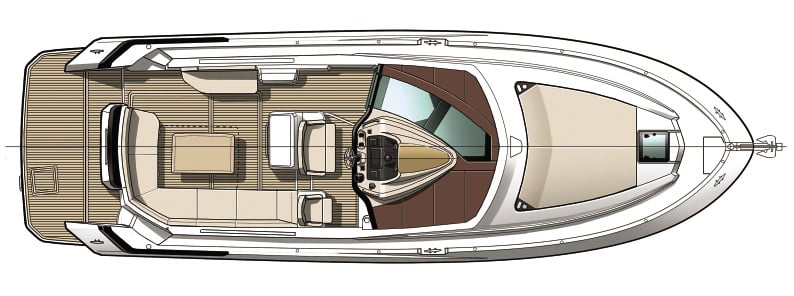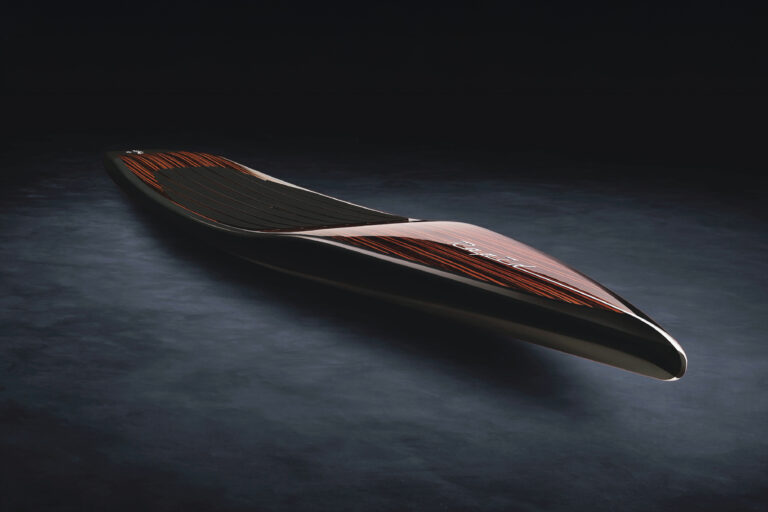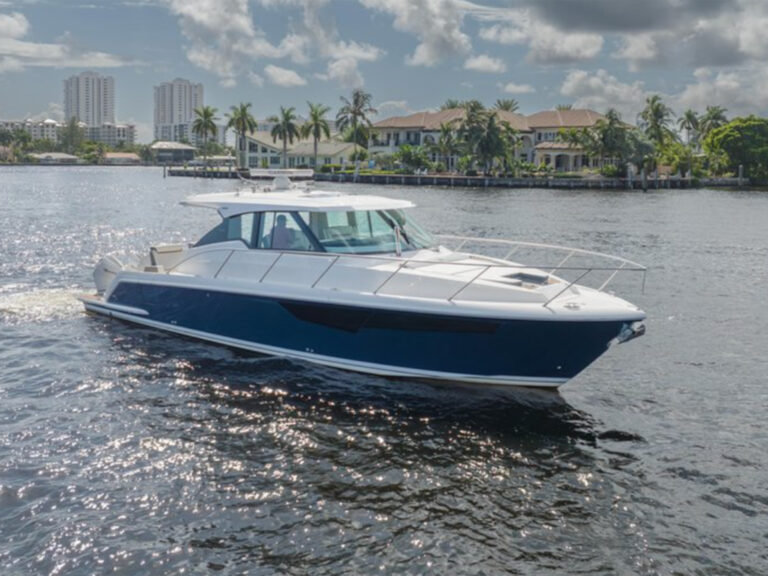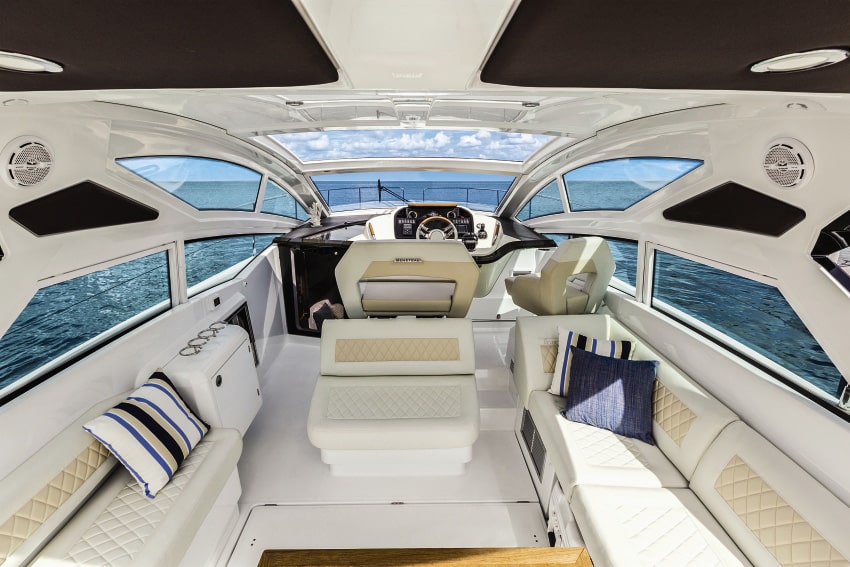
Express yachts in the 35- to 45-foot range have become predictable in their layouts because, after all, there’s only so much that you can do with a 40-by-12-foot box. Helm to starboard, dinette to port, blah, blah. But the Beneteau Gran Turismo 40 (also known as the GT 40) surprised me with a fresh arrangement that not only reimagines what a boat of this class can be, but that also provides owners and guests with a maximized experience.
Take the cockpit, for example. The designers stole a card from center consoles and placed the helm on centerline. Up two steps from the cockpit, this helm station puts the skipper and a companion where the visibility is best in all directions. The layout creates room for a third companion seat to starboard and allows entry from either side of the helm, so no one has to move. This makes for easy access to the cabin, too, with a companionway offset to port.
All good stuff.
The predictable settee aft does the unpredictable: It swoops around to starboard and ends up in a chaise for lounging, leaving room for a folding cocktail or dining table. The settee also turns into a sun pad, using the dinette table with filler cushions. There’s a settee to port, but that’s for kids because it’s bus-bench narrow.
Our test boat had another adult-size seat facing aft behind the raised helm seats. The result is that the entire cockpit becomes a floating living room for entertaining and relaxing. Take a dozen friends, and no one is crunched.
The cleverness continues below. Yes, there’s the usual master stateroom forward and aft stateroom tucked below the cockpit, but having the raised centerline helm provides the after cabin with improved headroom and an amidships entry between the berths.
The Beneteau GT 40 is a break with traditions that will, I suspect, create new traditions. What we have here is a French yacht with distinctive Italian styling, thanks to designers Nuvolari Lenard, built to please the American market. Très chic and bella barca.
LIKE RIDING ON AIR
The AirStep hull form is a patented Beneteau design. It pulls air in through a pair of notches in the chines forward of amidships, then channels the air to a pair of steps in the hull.
The introduction of air bubbles reduces drag and provides a cushioning effect in the after section of the hull. Reduced drag, of course, contributes not only to reduced fuel consumption (see “Truth to Power”) but also to quicker acceleration and a higher top speed.
Beneteau has essentially made this boat float, both on water and on air. I was surprised by the handling of the GT 40 as well. Beneteau’s U.S. sales director, Justin Joyner, kept telling me to crank harder in the turns until I was going hard over as fast as I could spin the wheel.
Yet the GT 40 tracked like it was on rails, without cavitation or instability. In all, it’s a sweet hull on many levels.
Truth to Power
The GT 40 is offered with two choices of Volvo Penta diesels. Standard is a pair of D4s that put out 300 hp each, while the option (as on our test boat) is a pair of Volvo Penta D6s, which up the horses to 370 each. The standard power offers a top speed of around 33 knots, while the larger engines bump the top end to 38.5 at an added cost of $15,000. I’d opt for the big engines because you’ll be loading the GT 40 with friends, water toys, food, water and perhaps some bubbly. The bigger engines will still give you a good turn of speed when the boat is fully loaded.
Fuel economy shouldn’t be a deciding factor. I was surprised to find that our big-engine test GT 40, with a hint of trim tab, ran happily at 33 knots while consuming 28.8 gph. That’s better than a mile per gallon, and when we dropped back to 30 knots, we were getting 25 gph. That pencils out to better than a 200-nautical-mile range at 30 knots, which is excellent when moving a 9-ton 40-footer.
Our boat also had the Volvo Penta joystick system, which links the sterndrives separately with the optional bow thruster. We were able to slide sideways between mooring posts with a twist of the wrist. That’s a clear testament to the slippery AirStep hull lines that the Beneteau designers drew, and the French attitude toward keeping weight to a minimum.
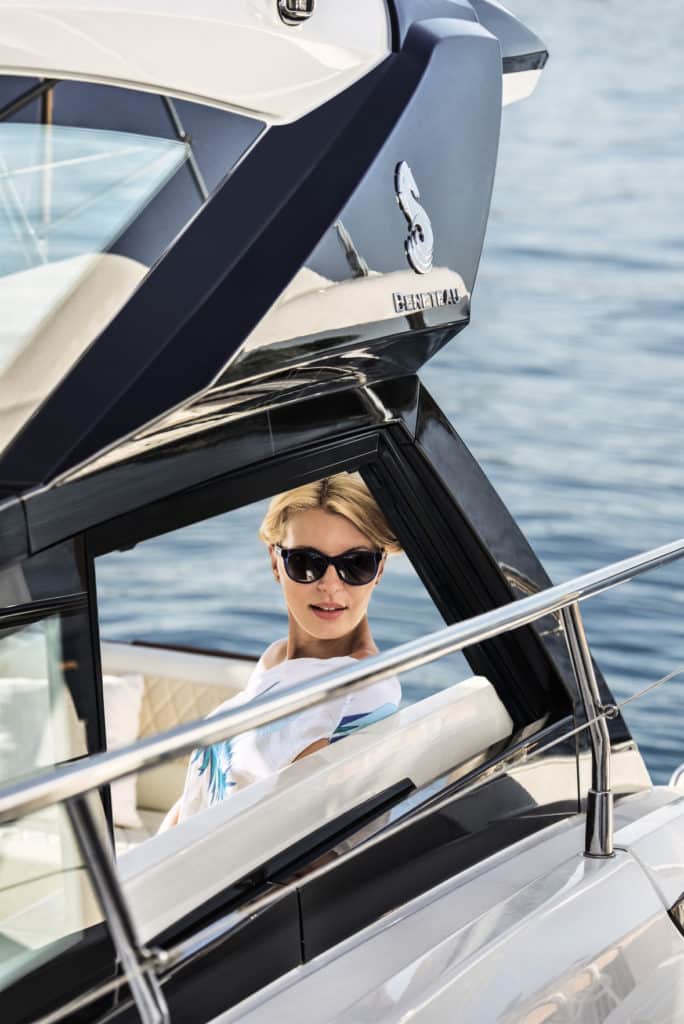
A Delight for the Chef
First, there is the primary galley down below to starboard, with a two-burner Kenyon cooktop, microwave, sink, fridge and stowage, all lighted nicely by the atrium effect of the clear, sliding companionway hatch. You won’t have gourmet dreams here, but who does that much cooking on a yacht of this size?
Besides, that’s just the start for the chef. In the cockpit, buyers can choose a grill and sink in a console abaft the helm (replacing the aft-facing seat on our test yacht). This is perfect for all-weather meals with the protection of the hardtop. Or, as on our test boat, the optional grill and sink can be in a waist-high pod on the outside of the transom. This would be my choice — it keeps the smoke away (I too often char the burgers!) and it’s easy to pass food to the cockpit table for alfresco meals. Putting the grill and sink here gives you the seat behind the helm, and it makes use of an otherwise dead area on the boat. Don’t worry about losing the cook overboard because the standard swim platform on the GT 40 is quite spacious. That platform can be fitted with an electrical lift to get a tender onto chocks, too.
But getting back to my main point: With all these highly usable food-prep stations, most chefs will be happy aboard the GT 40.
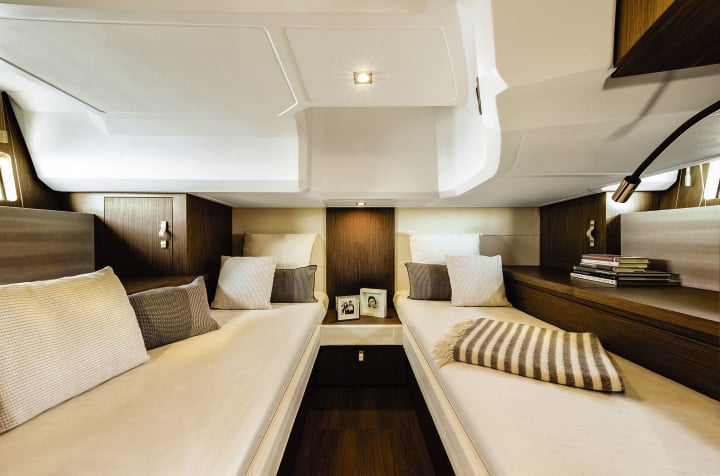
The Italian Connection
Once the Beneteau design team created the basic hull form with its AirStep underbody, the builders brought in Carlo Nuvolari and Dan Lenard, a pair of Italian designers who have been on the cutting edge of yacht style for 25 years.
While many designers focus on specific styles or sizes, Nuvolari Lenard works on a range of design challenges. A current project, for example, is the 456-foot Project Redwood under construction at Lürssen. Another is the 282-foot Quattroelle that Lürssen delivered in 2013. The duo has a depth in production yachts as well, having been the designers for the Beneteau series of Monte Carlo Yachts from 64 to 104 feet, as well as Marquis Yachts from 50 to 72 feet. The result, as seen in the running photos, is a good-looking yacht that will remain stylish for years.
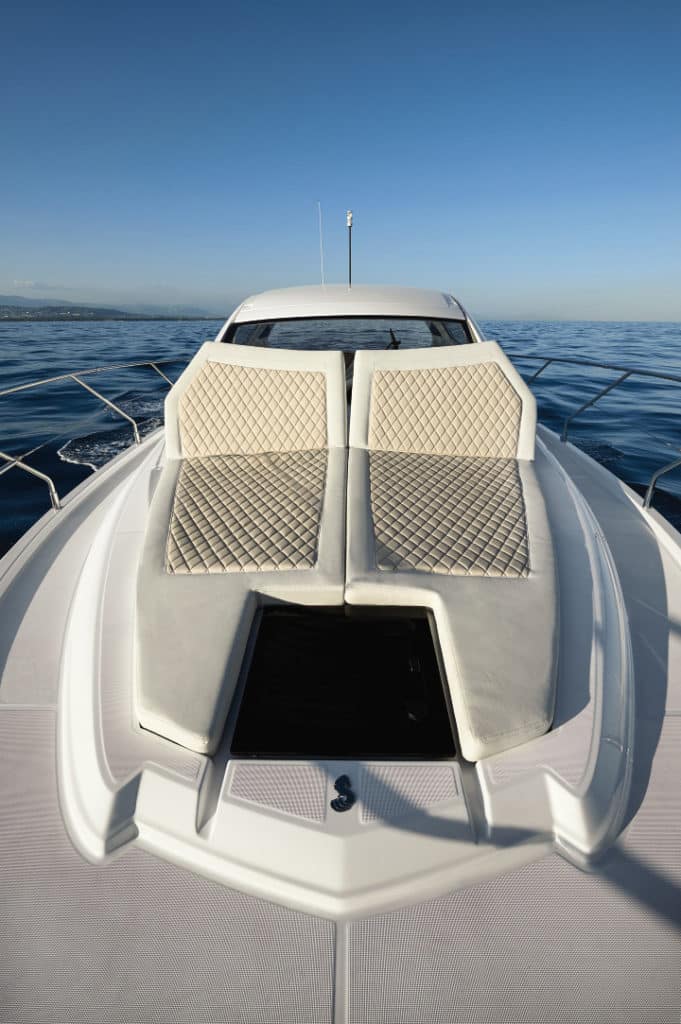
The Grand Tour
A lot of people these days probably think the letters GT — often slapped on the most unlikely little cars from Detroit — mean “good times,” or perhaps they don’t even notice in an era of cars with labels such as XT and GL and other meaningless designations.
But for some of us (including Beneteau), GT still means gran turismo, or “grand tour” in Italian. The acronym was bestowed only on sports cars that combined distinguished style with sporty handling, offering enough room to carry the driver and companion in luxury with space for a set of matched luggage — not to mention a picnic basket. In short, GT meant civilized high performance, and those are some apt descriptors for the Beneteau GT 40.
